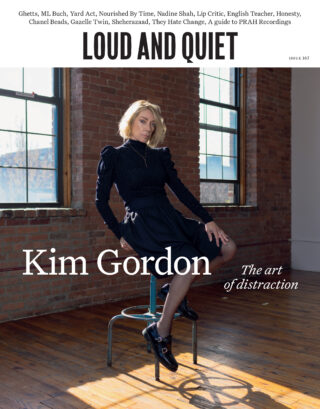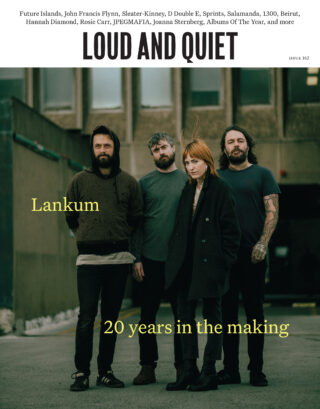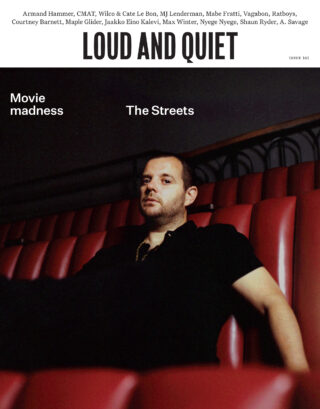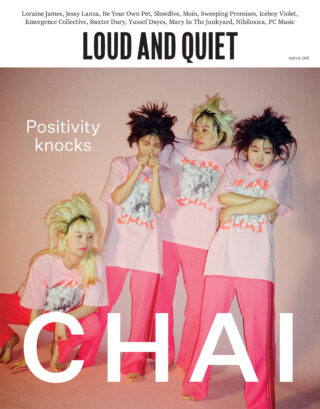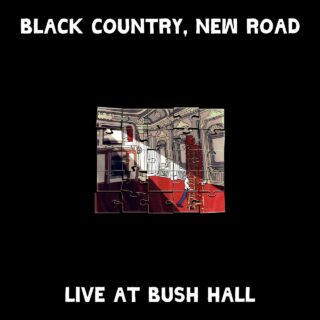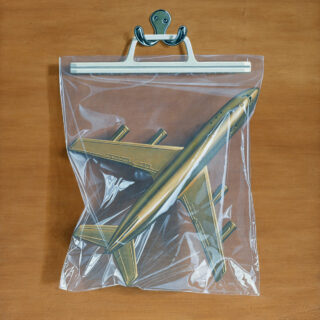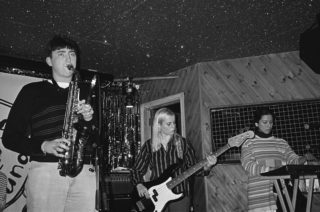
Over the last few years there have been some big shifts in contemporary music. Grime has reached such popularity and omnipotence that one of its leading voices can now headline Glastonbury, whereas ten years ago such music was being banned from London venues; pop has grown to become more eclectic, experimental and dominating than ever; Americans discovered rave music in the way only America could and turned it into a multi-billion dollar industry; earnest young men with acoustic guitars grew beards and turned mediocre open mic night outpourings into a plague; the conversation about the death/relevance of guitar music continued to rage with incessant banality; and jazz came back with a bang.
Perhaps of all these shifts and trends the one people saw coming least of all was the resurgence of jazz – especially amongst younger listeners. Blasts of saxophones were no longer confined to wonky buskers honking out ‘Baker Street’ or the connotations attached to the saccharine easy listening of Kenny G. Instead, kids in bedrooms and practise rooms everywhere began incorporating various styles, from super smooth grooves to Alice Coltrane-inspired cosmic mantras, into lively brass-led cross-genre eruptions. The upsurge of the saxophone has not been limited to just the rebirth of jazz though: more often its sounds can be heard coursing through records by bands and artists in the rock, indie, alternative and electronic fields.
Listen to recent releases that span multiple alternative genres, from the likes of Fat White Family, Cate Le Bon, Aldous Harding, Viagra Boys, Drahla, Crack Cloud, Jenny Hval, Black Country, New Road (pictured above), US Girls, Squid (although technically they use a cornet, but same point), and they are all connected by one thing. Clearly the sax is having something of a moment in the world of alternative music, but why and where did it come from?
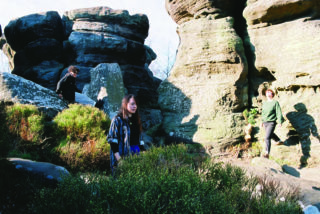
“Up until maybe 2014 I hadn’t been asked to do any sax work outside of where you’d probably expect to hear it: jazz big bands, ensemble bands, quartets etc,” says Christopher Duffin, whose sax work can be heard on records by Drahla, Virginia Wing, Xam Duo and Hookworms, as well as on stage with James Holden. “I kind of had a double life of playing the kind of gigs you don’t really tell too many people about whilst playing keyboards in bands. It wasn’t until Matt Benn [Xam Duo, Hookworms] got in touch to see if I fancied doing something that I got busier with the saxophone. That was an eye-opening period; I was kind of shocked yet pleasantly surprised that people would stand and watch us improvise for 30 minutes. People seemed really into the saxophone and from there I got a bunch of offers to play with people.”
When William Doyle f.k.a. East India Youth returned in 2018 with new track ‘Millersdale’ – expanding on his previous palate of electronic-leaning experimental pop music – it came loaded with a riotous sax solo. His forthcoming new single also features the instrument. “I started my new album so long ago now and at the time it felt radical to include sax but now it looks like I am the biggest bandwagon-hopper,” he says of the instrument’s sharp rise in recent years. “I think what’s happened is that on both sides of the Atlantic there’s been a bit of a boom for a number of reasons. Post-To Pimp A Butterfly, everyone suddenly finds out about Kamasi Washington. I remember getting ‘The Epic’ around the time it came out and it was great. There was a similar grandiosity to it that I was also trying to work into my own music at the time, and the saxophone felt like a great instrument for conveying the kind of feeling I was going for; expressive and dynamic – almost vocal in its delivery. It’s an instrument that can both cut through and introduce chaos simultaneously. Not many instruments can do that.
“That Kamasi Washington record was very well received and it felt like that was the start of a new epoch for that instrument, and people’s regard for contemporary jazz in general. Then, of course, London was becoming a hotbed for all manner of great players: Shabaka Hutchings, Nubya Garcia, Cassie Kinoshi, Binker Golding, Chelsea Carmichael… the list goes on. All these brilliant young players who were part of this network of musicians. It felt like the most exciting new scene to happen in the capital for years. That felt a little cemented to me when the We Out Here compilation came out on Brownswood. It felt like there was a real document then.”
Using sax in a guitar-led/non jazz context is of course not a revolutionary new act – it’s existed for decades. From Roxy Music to The Stooges, from James Chance to A Certain Ratio, it’s played a role whether as a means to lift melody in graceful accompaniment or to explode in itchy bursts to emphasise the pounce of anti-rhythms. But the feeling of it having real momentum at the moment feels inescapable. Lewis Evans of Black Country, New Road (easily one of the most exciting new bands in the country that are capitulating genre convention) sees this too. “I think this is a bit of a boom period,” he says. “I think it’s becoming much more present as we’re all trying to move away from the conventional and boring guitar band setup. Having an instrument like the sax in your band is an easy way to break that loop.”
Dan Leavers plays keys in Comet is Coming, one of the most pivotal bands at the forefront of placing sax front and centre in music again, but he too is a sax player and features heavily on the latest Trash Kit album. He thinks the image makeover the instrument has had is maybe also to do with the general cyclical nature of music. “In environmental science we are taught that populations of animals control themselves,” he begins. “If there is a rise in rabbits then the foxes gorge themselves and grow in number, only to make food more scarce in a self-organised regulatory system. Maybe it’s a bit like that – when something gets too naff nature steps in and now we can have another go.”
Whilst Trash Kit’s latest (and greatest) album, Horizon, is their most sax-heavy to date it’s an instrument that the band have been playing with for their entire existence. “I think it is trendy currently but I have no idea why,” says Rachel Aggs. “I’ve always loved sax, especially within the context of guitar music. I think it’s just such a winning formula. Bands like Essential Logic and X Ray Spex have always been a big inspiration for Trash Kit so I think we’ve been blissfully unaware of any new trends and have just carried on doing what we want.” Although she does feels attitudes towards the instrument have changed somewhat. “We had saxophone on our first ever record in 2010 and we got a couple of funny reviews – writers were like, ‘is this ska? I think it’s ska,’ in a negative sort of way, like they were trying to out us as secretly uncool. I love a bit of ska and two tone and I actually think the UK should celebrate that era of music more as a time when things were really a lot less segregated in terms of black and brown people in punk than they have been recently. I guess things come in waves though; perhaps sax got a bit overused in the ’80s in a lot of pop music and its taken the cool people a while to come round to it again. The rest of us have just been carrying on though.”
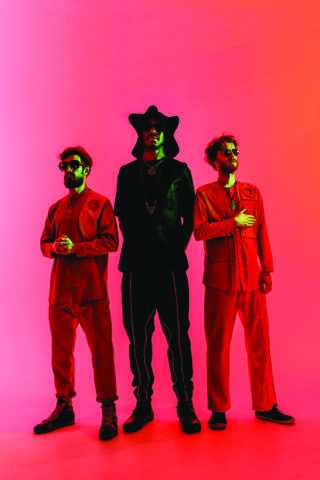
Whilst sax in some of the UK bands leans more towards the lineage of post-punk music, it’s also been just as present in more polished and indie-leaning music in the US. Duffin points out Arcade Fire utilising Colin Stetson as perhaps being a key moment over there. “If that guy can’t change people’s minds on the saxophone I don’t know who can,” he says. Matt Douglas is now a permanent member of the Mountain Goats but has also played sax for the likes of Superchunk, Bon Iver and Hiss Golden Messenger, and he agrees this early-to-mid 2010s era saw a shift in the States too. Perhaps most notable was Destroyer’s album Kaputt, but he also cites “albums by Spoon, Gayngs, Arcade Fire, War On Drugs and Bon Iver – they were pretty dense records; there was some pretty thick instrumentation and I feel like that production trend lent itself more towards including sax and woodwinds. Tune Yards also put out Whokill and it has amazing use of saxophone on it. I feel like the integration of the sax into rock and pop music is what people seem to want more of now.”
Bon Iver’s creative decisions – from his debut album onwards – continues to have huge reverberations in the indie world and beyond, and his 2016 album 22, A Million was no exception. “It was a huge honour to get to be a small part of that record,” Douglas says. “Playing these beautiful arrangements with a dozen sax players in a room was pretty life changing. As far as it being an important record, I think that had less to do with the saxophone specifically and more to do with the fact that Justin made the creative choice to invest in a week of recording a huge ensemble of the same instrument and wanting that to be sort of a centrepiece for the album.” The sax ensemble Douglas was a part of for the album was called the Sad Sax of Shit.
William Doyle also points out Deerhunter from this decade as being a key artist to swing the image of the sax. “In terms of how the sax has been used in this more indie and guitar context you could trace that recent development back to ‘Coronado’ on Deerhunter’s amazing Halcyon Digest [2010]. I remember Bradford Cox at the time, in true Bradford fashion, saying that after that song all of the bands would have saxophone on their albums. It took a little while, but was he right? Obviously they weren’t the first to use it in this context, but I think it was the first time in a while that a great band who make, for want of a better term, serious music were able to use it in such an effective and non-ironic way. The sound of the recording of the sax on that song is especially good too.” During this same period of the instrument gaining momentum, it was also heavily utilised by PJ Harvey on Let England Shake and the Hope Six Demolition Project, which between them scooped up on array of award nominations and wins.
We’re now entering a period in which a younger generation have embraced the instrument in a wholehearted way. Doyle thinks the generation shift is key. “For a long time I think the sax has generally been regarded with suspicion. My song ‘Millersdale’ was reviewed on Roundtable on BBC 6 Music, and the bass player from James was a judge. He really didn’t like the saxophone part. But then, he used the term ‘saxamaphone’ too, and I think that may point to a kind of generational suspicion to this instrument, especially from people in the guitar band world. Luckily, the kids don’t care now. They are in a post-genre world, and any music can and should mix with any other kind of music. The saxophone is a brilliant instrument, connotations be damned.”
The risk is, now that we’ve entered a period where more and more bands jump on the sax train, is there a danger of it becoming too much of a trend and peak sax being reached, throwing it back into the world of naff once again? Duffin thinks we’re moving past the point of being sniffy and fickle about such things. “At the moment I get way more saxophone work than I do keyboard or compositional work, so I hope not – it’s my job! It does seem strange though as at least half of the reviews I get will start with, ‘I’m usually not into saxophone,’ or, ‘despite previous sax crimes’ – both direct quotes – and then they go on to say really nice things. I get it live too, the same phrases. I find it funny though; I like being the thing that could potentially ruin somebody’s evening. Imagine if you had to mention all of the previous crimes against the guitar before you said you liked someone’s playing – you’d be there all day.
“I think the saxophone has loads of time left, as it’s capable of anything and when it’s treated right it’s just part of the furniture in a band. Maybe it will be less popular as these things ebb and flow, but I don’t think it’ll totally go away. We’re through the looking glass now and maybe it’ll be totally exonerated of its previous crimes sometime soon.”
Lewis Evans doesn’t really care whether it remains a hip instrument to be playing or not. “Good music doesn’t rely on being fashionable,” he says. “If I was playing the sax as a fashion statement then I’d have a lot of questions to be asking myself.”
Photography: Yu Igarashi
